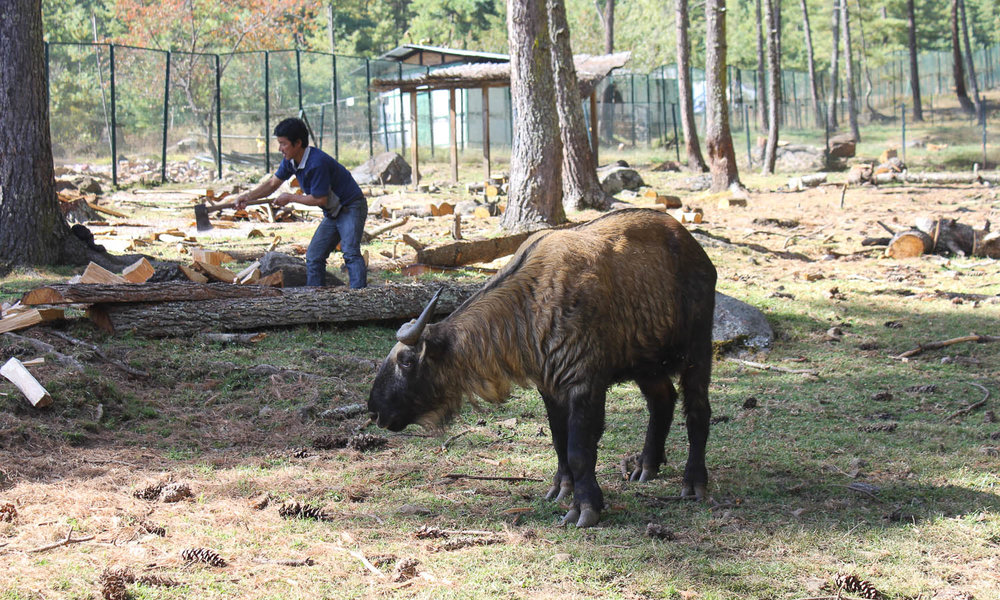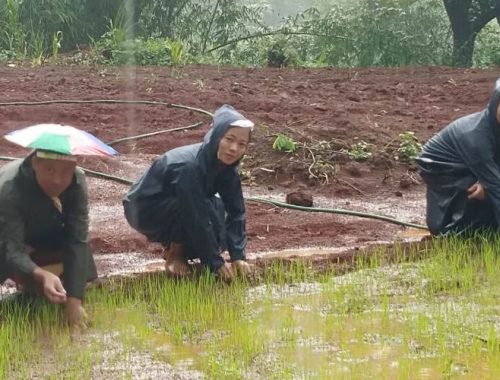
Bhutan takin is found between 1,200 meters and 5,374 meters in northern Bhutan. Human-induced changes are threatening the habitats of Bhutan takin (Budorcas taxicolor whitei).
By Choki Wangmo / Kuensel via Asia News Network:
Linear infrastructure such as expansion of road and transmission lines and improper land-use planning were found to hinder wildlife movement and disturb prime habitats of the species, according to the first national report on takin by the forest department.
The infrastructure developments, if unchecked, could cause unforeseeable risks due to penetration into the takin habitats.
The Bhutan takin is one of four subspecies of takin and is endemic to Bhutan. It is a large bovid ungulate found along the warm broadleaved forest through the alpine region between the altitudinal range of 1,200 meters in warm broadleaved forest to 5,374 meters in northern Bhutan.
The animals mostly inhabit Jigme Dorji National Park and Wangchuck Centennial National Park although they are found also in Paro, Thimphu, and Wangdue forest divisions.
The report stated that winter habitats of takin were highly vulnerable to anthropogenic pressure due to its closer proximity to human settlements. “Building roads closer to or within the takin habitats will not only alter the animal behaviour but will also fragment the habitats.”
To deter negative impact within the habitats, the study recommended the government focus on maintaining the existing farm roads rather than building new roads. “If new construction is required, it should be cost-effective and environmentally less damaging.”
The current method of “cut-fill” construction involves high cost and is not environmentally friendly. Experts documented the indirect impact of such developments on wildlife — physical barriers for movement and dispersal, displacement and change in habits, among others.
Takin prefer continuous gentle terrain and an undisturbed habitat for foraging, finding mates and long-term sustenance. For that, low-altitude forested habitat outside protected areas should be incorporated into takin management plans and should be protected as takin habitats, according to the report.
Further to that, takin inhabit remote areas away from high-density human settlements, which increases the poaching risk. It was observed that Bhutan takin were susceptible to snaring, illegal trapping and disturbance from feral dogs.
Bhutan takin migrate from alpine valleys to lower forests in autumn and return to the summer habitats in early spring. The species has been reported from Xizang in China and Sikkim, and Arunachal Pradesh in India. Its population is estimated between 500-700 individuals.
The Takin is found in steep forests extending to the timberline and mountain valleys in the Eastern Himalayas and adjoining mountain ranges of Bhutan, India, Myanmar and China.
The Bhutan takin was declared the national animal of Bhutan in 1985 and is strictly protected under the Schedule I of the Forests and Nature Conservation Act of Bhutan 1995. The takin is categorised as vulnerable in the IUCN Red List



